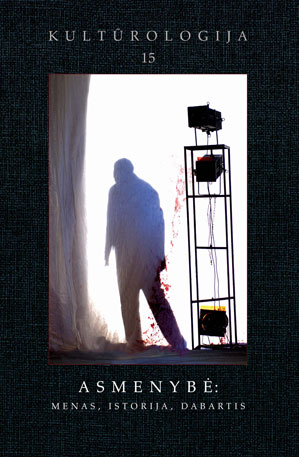Dailininkas ar amatininkas? Menininkai ir dailiųjų amatų sąjūdis tarpukario Lietuvoje
Artists or Artisans? Artistis and the Artisan Guild Movement in Inter War Lithuania
Author(s): Lijana ŠatavičiūtėSubject(s): Cultural history
Published by: Lietuvos kultūros tyrimų
Keywords: Artists; artisans; guild movement; inter war; Lithuania
Summary/Abstract: The guild movement which arose in the 1930s was a priority in the social and cultural policies of the state, which was to decide a number of social and cultural problems as well as the continuation of traditions. A significant role was foreseen for artists in the guild movement. They had to not only prepare artisans, but also provide an artistic direction for the works they created. In one aspect or another, professional artists added to the artisan guild movement. Some worked in the Department of Agriculture, where they supported the activities of artisans (among them Antanas Tamošaitis, Liudvikas Strolis, and Vladas Švipas), headed courses for artisans (including Anastazija Tamošaitienė, Tamošaitis, Strolis, and Antanas Gudaitis) taught at guild schools (including the above-mentioned artists, and Viktoras Vizgirda, Robertas Antinis, and Tadas Lomsargis). The work of artists in the educational system became a societal phenomenon. Artists were active participants of guilds and propogators of a more progressive way of life. They put together publications about Lithuanian folk trades (with the Sodþius menas series), about handicrafts, construction of village houses, and collaborated in the media. Tamošaitis, Tamošaitienė, Strolis, Gudaitis, Paulius Galaunė, and Jonas Prapuolenis among others published articles in the press that focused on guilds and agriculture. The company Marginiai was created in 1930 to meet the demand for folk-style furni-dabartis ture, textiles, ceramic and wood carving examples, which were created not only by students of the Kaunas Art School, but also by professional artists who strived to uphold the characteristics of the national style. Artists designed furniture for representative interiors (including for the Lithuanians living in Pittsburg, the Cadets' Club in Kaunas, and for women's associations) and created applied art works for world expos in Paris and New York. Based upon factual evidence, a conclusions is made that the role of professional artists in the interwar guild movement is not sufficiently recognised and that only recently stereotypes about artists of the interwar period who were not interested in the problems of guilds have been retracting from Lithuanian art history research. Perhaps love for guilds arose not only from consciousness or understanding of the needs of a new society. However even "making up" for state grants or working simply to improve their financial situation, artists played an important role, becoming participants of the guild movement, which was a mass interwar phenomenon.
Journal: Kultūrologija
- Issue Year: 2007
- Issue No: 15
- Page Range: 244-272
- Page Count: 28
- Language: Lithuanian

